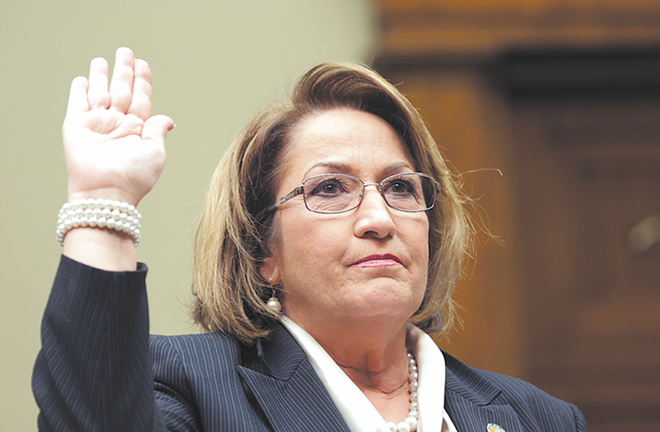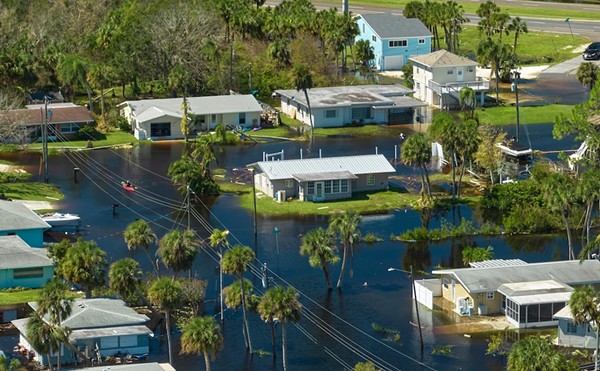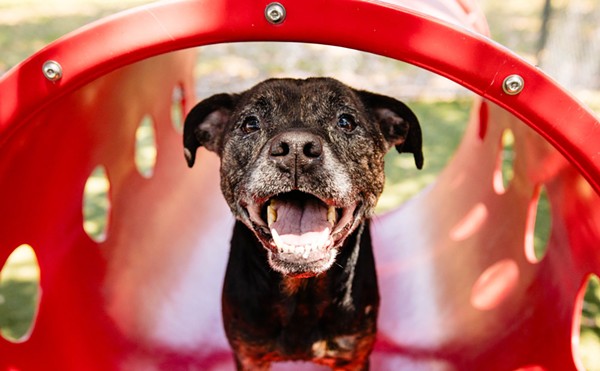"We must be tireless in educating people that addiction is an illness that requires serious medical treatment," Mayor Teresa Jacobs told federal lawmakers in 2016. "From law enforcement to families, the life-saving drug naloxone needs to be more accessible without a prescription and available at a reasonable cost. ... With a regional population of 2.5 million, we have only 26 beds for the uninsured. And yet 62 percent of the overdoses in our community are among the uninsured."
Police at the University of Central Florida were the first agency to carry naloxone in late 2015 after getting a grant for 150 doses. At the time, that made UCF one of only two universities in the country carrying the antidote on campus, according to USA Today. So far, UCF campus police officers have not had to administer a dose of naloxone as of last Thursday, says Courtney Gilmartin, a university spokesperson. The FDLE's Orlando office was the first state law enforcement agency to issue naloxone to agents and have it accessible at public entrances. Since first responders at the Orange County Sheriff's Office began carrying naloxone last summer, they've administered the life-saving medication 106 times.
"I oversee nine counties in Central Florida, and Orange County was the first to initiate this task force and stress the importance of issuing naloxone to first responders," Banks says. "It's a non-traditional role for police, this increased responsibility to carry something on them intended solely for the purpose of saving people's lives. But that's how bad this epidemic has become. Law enforcement may very well be the first ones to come into contact with an overdose."
Burkett says that while many of the recommendations have moved forward, there's still work to do. From 2014 to 2016, the number of babies in Florida born addicted to opioids increased from 1,903 to 4,215. That's a rate of about 18 infants with addiction withdrawals for every 1,000 live births. During the same period in Orange County, the number of addicted infants swelled from 158 to 327.
"We're not seeing as many heroin-related deaths in Orange County because law enforcement officers are carrying naloxone, which is absolutely saving lives," Burkett explains. "What we're seeing now on the street is a switch from heroin to mixing heroin with fentanyl. It's primarily from China, and it's 50 times more potent than heroin. Carfentanil, a fentanyl analog that's an animal tranquilizer, is 10,000 times more potent than morphine. No one really knows what they're getting in the bag that they're buying."
Burkett says the shift to stronger opiates like fentanyl means it might take more naloxone to reverse an overdose – a person might need two to three doses. Narcan, a brand of naloxone, costs $75 for a two-pack nasal dose for law enforcement officials, but paramedics can get cheaper prices on naloxone delivered through injections.
"Something I frequently hear the mayor say is that the reason Narcan is so important is that you can't get somebody help if you don't first save their life," says Carrie Proudfit, a spokesperson for the county. "Without naloxone, there's not even an opportunity for an intervention."
Banks says the task force's fight against the opioid epidemic has to include health services and treatment for addicts – to ignore it would cause a repeat of the surge in heroin and fentanyl use after the pill mill crackdown.
"Law enforcement officers can't just constantly displace drug addicts by moving them to just abusing a different kind of drug," he says. "There's going to be a different drug of choice two years from now, so we have to look at it from a rehab perspective and turning addicts away from their need to have any type of drug."
Many people still don't understand that addiction is a health care condition, says Mark Fontaine, executive director of the Florida Alcohol & Drug Abuse Association. Although lawmakers may not comprehend that funding for addiction treatment is needed, they're already picking up the tab without realizing it.
"There's a growing understanding in the Florida Legislature of the impact addiction has on the state budget," Fontaine says. "The cost gets played out in emergency rooms, in Medicaid spending, prison beds, juvenile detention beds and certainly in the child welfare system, where there's a tremendous pressure because of an increase in child removals from the home because of parental addiction. This epidemic is hitting all fronts."
Jeff Turiczek, CEO of Tampa's River Oaks Treatment Center of American Addiction Centers, says Florida's opioid epidemic could be dramatically affected if Republicans in Congress and President Donald Trump keep their promise to repeal the Affordable Care Act. Currently, the federal health care law gives low-income people with mental health problems or addictions the ability to afford preventative services, like rehab, through Medicaid.
"I don't think anybody goes in knowing an opiates addiction can be so expensive," he says. "There's never enough beds, never enough indigent care for the uninsured in Florida. It's a disease, and something that needs to be treated. It really is beyond somebody wanting to just give it up."




















